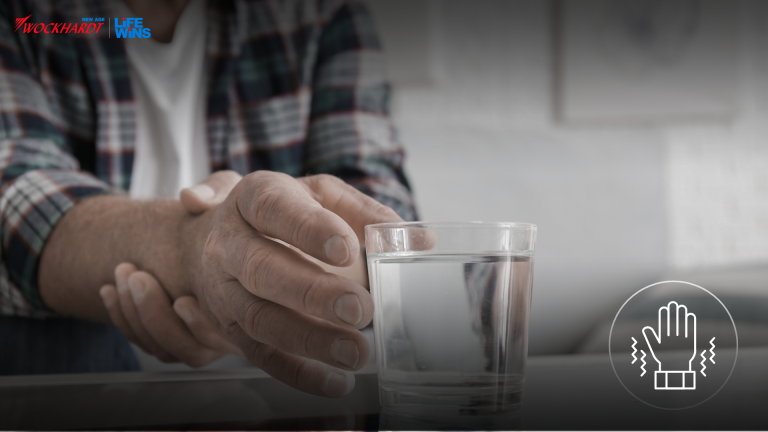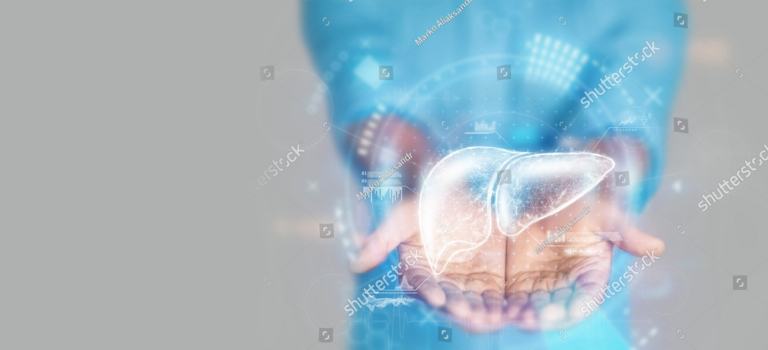How to Take Care of Heart in Your 40s

Are you in your 40s? Then, you need to beware of heart problems. Yes, Heart problems can strike-in at any stage. Hence, taking preventive measures can help you reduce the risk of heart disease and improve your quality of life. Read on to know about keeping your heart healthy in your 40s. Also, don’t forget to follow the vital tips listed in the article below. The cases of heart attack in youngsters are increasing at a rapid rate, and many are losing their precious lives. A sedentary lifestyle like lack of physical activity, stress, unhealthy eating habits, and even comorbidities can double the chances of heart problems. Yes, you have heard it right! Diabetes can give a tough time to your heart. Did you know? High blood sugar levels can lead to atherosclerosis that is the build-up of fats, cholesterol, and other substances in and on the artery walls. Hence, you will suffer from chronic health problems and fall prey to a heart attack. Even high blood pressure tends to make your heart muscles thicken, harms the blood vessels, and invites a heart attack. Have you gained oodles of weight? Then, you will immediately have to embrace a healthy lifestyle to battle the bulge. Being overweight or obese can lead to a heart attack. Moreover, smoking can raise blood pressure and narrows them, making you prone to a heart attack. Thus, once you turn 40, you need to pay attention to your health in order to lead a healthy life. Know what you can do to keep your heart healthy It is a no-brainer that quitting smoking can do the trick. So, opt for a smoking cessation program and try to limit your alcohol intake too. Try to get active by exercising daily. You can walk or do aerobics. Do not indulge in intensive workouts that can strain your heart. It is better to speak to your doctor before starting any fitness routine. Exercise for at least 5 days a week for half-an-hour. Moreover, you will also have to stay healthy and maintain an optimum weight. Eat more fibre and avoid sugar, salt, and trans fats. Include fresh fruits, vegetables, nuts, pulses, legumes, oats, and whole grains in the diet. Say No to pizza, pasta, cake, pastries, donuts, desserts, sweets, namkeens, and colas. Eat food in controlled proportion. Check food labels before buying anything to make sure you are not having too much salt. Maintain appropriate cholesterol and blood sugar levels as recommended by the doctor. Do not ignore symptoms such as chest pain, palpitations, breathing problems, and even unusual sweating. Stress can be problematic for your heart. So, try to stay happy and calm down by opting for relaxation techniques such as yoga or meditation. Invest time in doing what you like. Paint, listen to music, dance, or cook. By Dr. Chetan Bhambure, Consultant Interventional Cardiologist, Wockhardt Hospitals, Mira Road. Source: https://health.economictimes.indiatimes.com/news/industry/how-to-take-care-of-heart-in-your-40s/86608986
Indians predisposed to heart failure due to genetic reasons

Dhiren Sevak, a 42-year-old tax consultant based out of Mumbai, had the shock of his life when he found out that the discomfort in his chest was actually a heart attack. Sharing his ordeal, he said that he never thought he would end up in such a situation since he is not overweight. According to experts, Indian men in the age group of 40-45 are more susceptible to heart failure. The World Health Organization says India reported 63 per cent of the total deaths due to non-communicable diseases, of which, 27 per cent were attributed to cardiovascular diseases, which also account for 45 per cent of deaths in the 40-69 age group. According to Dr Ashish Agarwal, Indians are already predisposed to heart failure due to genetic reasons. Now, with smoking habit being more rampant in younger people, including women, cardiovascular diseases are becoming more common. Besides this, sedentary lifestyle and stress also lead to weight gain, which, in turn, increase the risk of heart disease. Diabetes is also a major cause of heart diseases. ‘A major defect’ “Our genes have a major defect, because of which young people in our country are facing heart attacks. The other reasons are diabetes and increasing stress levels. Thirty per cent of people die within one hour of the heart attack,” said Dr Ravi Gupta, Consultant Cardiologist at Wockhardt Hospitals, Mumbai Central. According to experts, although the genetic predisposition cannot be prevented, other contributory factors that lead to heart failure could be controlled. “Brisk walk and a good diet may help in preventing heart failure. Stress management is very important, and people need to be aware about their health. They should avoid smoking,” said Agarwal. “Knowledge of cardiopulmonary resuscitation is extremely important till one receives medical assistance. Young people above 30 who have hypertension, diabetes, obesity or family history of the above or even if they do not have any problem, routine basic tests such as ECG, 2D Echo test, A stress test are extremely important,” Gupta added. Meanwhile, Sevak, who is now on the road to recovery, said: “Young people need to learn to strike a balance in their personal and professional life. Taking time out for one’s health is extremely important. Anything extreme is not good. Physical activity, meditation and yoga must become an integral part of one’s life.” Source: https://www.thehindubusinessline.com/news/national/indians-predisposed-to-heart-failure-due-to-genetic-reasons/article36721988.ece
Lifestyle Changes to Improve Heart Health in People Under 40
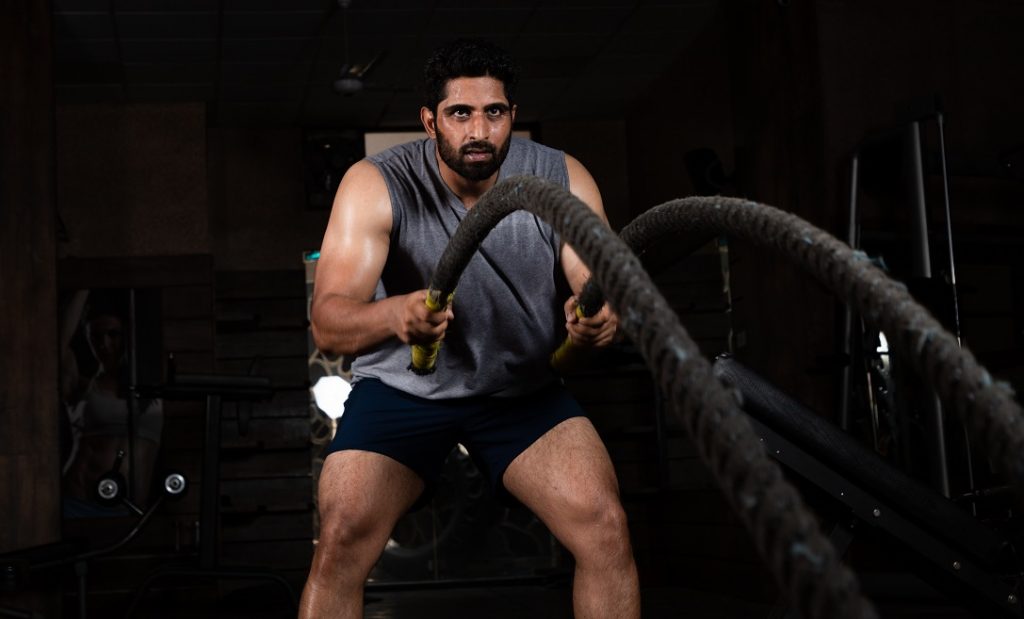
Cardiovascular Diseases (CVDs) are one of the leading causes of deaths across the globe and the most common complication is a heart attack or stroke. While medicine experts have managed to formulate several advanced procedures to treat CVDs, it is still hard to predict when one might suffer from a heart-related complication. In recent years, studies have shown that heart-related conditions are on the rise among young people. Television actor Sidharth Shukla’s demise in September at age 40 due to a heart-attack brought the focus back on this subject. Risk Factors Dr. Chetan Bhambure, consultant interventional cardiologist, Wockhardt Hospitals says people with comorbidities such as high blood pressure, cholesterol and diabetes during their 30s or 40s need to be extra vigilant about their heart health as their chances of suffering from a heart disease is higher than their non-comorbid counterparts. Lack of physical activity, obesity, uncontrolled diabetes, cholesterol, and high blood pressure only enhances the risk. Excessive smoking, drinking and a sedentary lifestyle can also prove to be damaging. He adds that stroke, heart failure, and heart attack are a common occurrence in people with comorbidities. Also, to avoid the risk of a heart attack or stroke in the later part of life, it is imperative to take care of the heart in the younger years, adds Dr. Narayan Gadkar. Therefore, on the occasion of World Heart Day, Mid-day online has combined the insights of experts to collate a list of lifestyle changes that could reduce the risk of heart-related complications in young people. Dr. Bhambure says powerful nutritional strategies can be beneficial for the heart. Regular consumption of the right foods can help curb the risk factors such as high blood pressure, cholesterol, abnormal blood sugar levels, triglycerides, and obesity which may give rise to a heart disease in later life. He adds, avoid saturated fats and trans fats and choose monounsaturated and polyunsaturated fats. Eat more fibrous foods and switch on to plant protein from animal protein. Go for low-fat dairy products and control your portion size. Higher cholesterol levels in the body can lead to atherosclerosis (plaque builds up inside arteries) which can, in turn, increase the risk of a heart attack or stroke. Dr. Gadkar says eat fresh fruits like apples, berries, cherries, avocados and kiwis. Opt for legumes like beans, lentils, nuts, seeds, olives, herbs, paneer, tofu and whole grains. Go for oily fish like salmon, mackerel, tuna, sardines, which will increase HDL, i.e., good cholesterol, and reduce the risk of blood clots. Eat corn, soy, pumpkin seeds, sunflower seeds, flax seeds, sesame seeds, and chia seeds. Cut down on processed, junk, oily, frozen and canned food. Limit salt and sugar intake. Cut down on colas, sodas, artificial sweeteners, and colors. Even alcohol and smoking should be avoided. Get the Body Moving As a young adult, regular exercise is the best gift that you can give your heart, says Dr. Bhambure. Staying fit and maintaining optimum weight will help cut down the chances of coronary artery disease and vascular disease. Exercising will help control abnormal blood sugar levels, and also lower stress that could lead to heart problems. Being physically active also slows down the heart rate and lowers blood pressure. Brisk walking, swimming, yoga, running, aerobics, cycling can help burn calories and enhance the functioning of the blood vessels. Dr. Gadkar also recommends resistance training, push-ups, pull-ups, chin-ups, stretching. However, it is advisable to consult your doctor before taking up a fitness regime and practice it under the guidance of an expert. Manage Stress Dr. Gadkar says stress can contribute to heart disease and stroke. Particularly for working professionals, stress causes overeating, smoking, increased alcohol intake and disinterest in fitness-related activities, among other things. All these factors can block the blood vessels. Lack of physical activity and weight gain can raise blood pressure. Thus, a heart attack is common in those who are stressed. Regular exercise, eating a well-balanced diet, avoiding emotional eating, and addressing issues like depression and anxiety can help manage stress. Create a structured routine of activities you like doing, Dr. Bhambure adds. So, listening to music, dancing or gardening can help beat the stress. For working professionals, practicing deep-breathing exercises, dividing work into smaller tasks and setting smaller goals can help. Source: https://www.mid-day.com/lifestyle/health-and-fitness/article/world-heart-day-lifestyle-changes-to-improve-heart-health-in-people-under-40-23194288
5 Breastfeeding myths busted by an expert

A mother is never off-duty. Many of you would agree with us on this. Be it changing the baby’s diapers, feeding him/her, putting them to sleep, or even helping them have a burp, a mother has to do all this, that too with a smile, despite being tied-up all day. Add to this, the usual household chores, taking care of the family members and whatnot. It is a tough deal. More so, if you are a breastfeeding mother. Why, you ask? You will get to hear all sorts of misinformation, from sagging breasts to eating bland foods, that you will be forced to believe. The result? No matter how hard you try to not fall for these, they will get you at some point of time. Dr. Gandhali Deorukhkar, Consultant Gynaecologist, Wockhardt Hospitals, Mumbai Central, busts a few and shows the right path. Myth 1: Breastfeeding is a reliable form of birth control Fact: Even if you exclusively breastfeed, ovulation and chance of becoming pregnant start after 3 months of delivery. So, consult before that for contraception. Myth 2: You should not nurse if you have blocked ducts Fact: Best way to treat blocked duct is to nurse as often as you can to prevent infections. Besides frequent nursing, apply hot fomentation before nursing. If you develop an infection, consult your gynaecologist. Myth3: Your breast will forever sag after breastfeeding Fact: The breast often doubles in weight during pregnancy. Whether or not you breastfeed, increase in breast size during pregnancy puts extra stress on the ligaments that support the breast and more stress equals extra sagging. Your age, BMI, pre pregnancy bra size, all affect how likely your breasts will drop. Myth 4: Mother must eat only bland foods and not gassy food while breastfeeding Fact: By the time the foods you eat have been digested and used to make breast milk, the potentially upsetting elements have been broken down and should not affect your baby at all, i.e. if you eat cabbage or broccoli, it is unlikely that it will make your baby gassy. Do not change your feeding habits. Keep yourself well hydrated. Myth 5: Drinking dark beer will help increase your milk supply Fact: There’s no evidence to back this up. In fact, drinking too much alcohol can reduce your prolactin level. This is the hormone that helps you make the amount of milk you make. According to the World Health Organization, not drinking alcohol is safest for breastfeeding moms. Source: https://www.pinkvilla.com/lifestyle/health-fitness/exclusive-5-breastfeeding-myths-busted-expert-905818
National Fitness Day: Organized Fitness Activities in Mira Road

To motivate people across the country to celebrate the perks of getting active during the pandemic, stay fit, and inspire individuals to take charge of their health, Wockhardt Hospitals, Mira Road Celebrated National Fitness Day with fervor. The hospital organized fitness, and hashtag Challenges that included doing planks, squats, push-ups, lunges, jumping jacks, to encourage people to exercise followed by a price distribution session. Physical activity will be beneficial in improving overall well-being. It is essential to stay active and lead a healthy life. Exercising on a daily basis reduces stress, depression, anxiety, makes you feel happier, increases bone mineral density, is good for weight loss, joints reduce the risk of diabetes, hypertension, cholesterol, and heart problems, sharpens memory, and enhance the mood by energizing you. Today, due to erratic schedules, a majority of people fail to stick to a proper fitness regimen, and suffer from various health problems and succumb to them. To help people understand the importance of fitness, Wockhardt Hospitals in Mira Road came up with a unique initiative of fitness challenge. Dr. Imraan Khan, Physiotherapist, Wockhardt Hospitals, Mira Road, said,“Currently, owing to the pandemic, the attention has shifted from non-communicable diseases to communicable diseases that are infectious diseases or transmissible diseases like Coronavirus disease (COVID-19), influenza, Hepatitis, Flu Vector-borne & parasitic diseases, etc. While non-communicable diseases like Diabetes, Cardiovascular diseases (such as heart attack & stroke), cancers, chronic respiratory diseases (such as chronic obstructive pulmonary diseases(such as chronic obstructive pulmonary disease and asthma) continue to be a huge burden all around the globe. NCD’s, as per some studies, contributed to around 60-70% of all deaths globally & 50-60% in India (pre-pandemic).So far we have clearly learned that NCDs & COVID-19 are closely interconnected. The causes of these non-communicable diseases can be attributed to alcohol, smoking, poor eating habits, and lack of physical activity. Thus, staying physically active and exercising lowers the burden of non-communicable diseases. This event was to create an awareness regarding the importance of physical activity & fitness around starting from our own hospital and around, 4-5 exercises challenges like doing planks, push-ups, squats, lunges, were conducted wherein more than 100 people participated. Around 40 people participated in the Facebook hashtag challenge in just 2 days that is #GetFitWithWockhardt by uploading 30 seconds video of exercising and nominating others to exercise too.” Dr. Khan added, “Even a brief session regarding the importance of fitness was given to the hospital staff by the whole physiotherapy team that included the components, myths, and barriers to fitness.This idea is all about giving that initial push to people to make them indulge in the activity in a fun & healthy competitive way. They even concluded with price distribution.Dr. Vini (Anesthetist), Dr. Tushayu (Emergency medicine) & Ms. Sonal (Dietician) were among a few more to get the prices. Earlier, fitness was only limited to youngsters. But, today it is the need of the hour for people of each and every age group to stay fit & physically active especially during pandemics when fitness has taken a backseat. Many people are facing problems such as breathlessness, fatigue, weaknesses, difficulty in getting back to their previous activity levels & obesity either due to the post covid infection or due to physical inactivity because of the lifestyle changes due to pandemics. It is imperative for everyone to exercise for 150 minutes per week, and consult a physiotherapist before initiating any fitness routine.Dr. Imraan Khan added “If we can take one step towards being physically active & fit. We can reduce the mortality & morbidity caused during this pandemic even more & also can reduce the burden caused by these NCD’s globally” So stay fit, stay strong, stay safe.
Tips to Keep your Heart Healthy
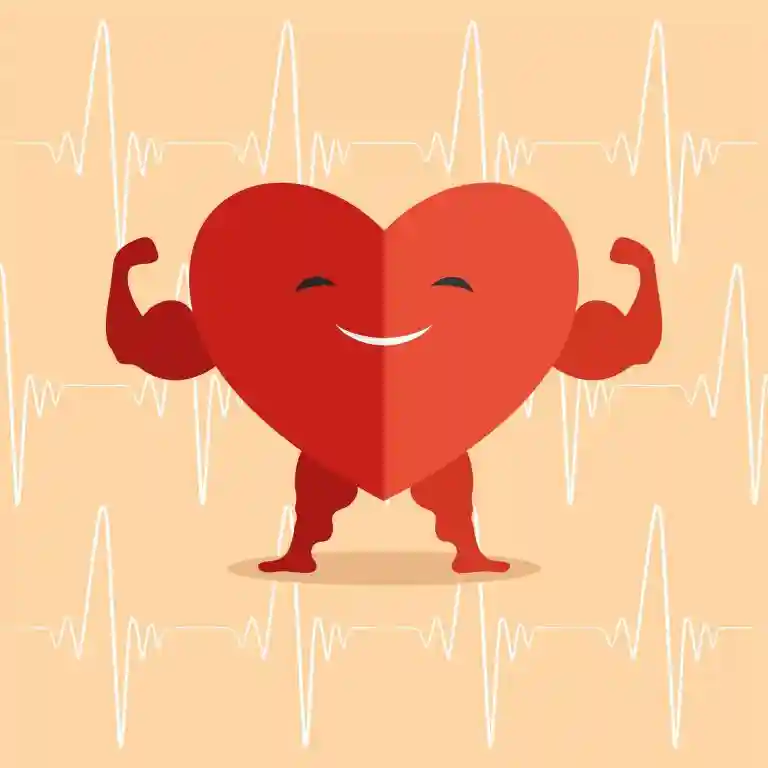
Many of us would think twice before saying no to a delicious, hearty meal any time of the day. Only thing is, we tend to overlook an important aspect the moment we lay our eyes on a sumptuous spread- the harmful effects food can have on our health and more specifically, our heart. The food you eat has an impact on your heart and unhealthy eating, coupled with a sedentary lifestyle can damage your health. Eating healthy will keep your heart fit and fluttering flawlessly for a longer time. A heart-healthy diet can diminish the risk of heart disease or stroke by almost 80%. Follow the Tips Below to Help Prevent Heart Disease: Cut Down on your Fat Intake: To prevent or reduce heart ailments, you need to choose the right type of fats and eat less fat in general. Our diet comprises a large amount of fat in general, regardless of the source. So cutting down on the fat and oil intake can be a good first step. Avoid fats that elevate cholesterol levels; saturated fats and trans fatty acids, which are present in bakery products, fried foods, butter, cream, margarine. Use healthier oils like olive, ricebran or soyabean Eat Green Leafy Vegetables, Fruits and Low Fat Dairy Products: All meals should comprise an adequate amount of vegetables and fruits because they have a high satiety index and therefore regulate appetite. They are low in fat and high in fibrous content and power-packed with vitamins and minerals, which are beneficial for the heart. Make sure to consume fresh fruits and vegetables at least 5 times a day. Eating fresh produce can keep you full for a longer period and may prevent you from eating unhealthy snacks. Regulate the Consumption of Sugar, Sugary Products, and Salt: High intake of sugar leads to high insulin levels in the body and inflammation and damage of the arteries. Not just that, excessive sugar consumption also leads to weight gain, further increasing the risk of cardiovascular diseases. Thus avoid fast foods as they contain starch, sugar, and trans fat. Excess salt in your diet can cause blood pressure elevation, which increases the development of heart problems. Reduce your daily salt intake to not more than 5gms a day. You can cut off your excess salt intake by using less salt for cooking, avoiding table salt while eating, cutting down on processed and canned foods, and avoiding crackers and snacks which are high in salt. Indulge in Whole Grains: Whole grains are excellent sources of carbohydrates and fiber and help in regulating blood pressure and heart health. Try to add whole grains as much as you can to your meals and refrain from eating refined flour products. Substitute white bread and pasta with brown bread and whole wheat pasta, add coarsely grounded flaxseed ion salads/cereals and make chapatis with a combination of grains. Choose a Low-Fat Protein: Eating protein is a healthy start. But many good-quality proteins are also high in fats. Opt for chicken and fish and cut down on meat, beef, and pork, use leaner cuts that trim down the fat. Use methods like grilling, baking, and barbecuing rather than frying and making gravies. Maintain a Healthy Body Weight: Being overweight can increase the risk of heart disease. Maintain an ideal body weight for your height and age. A lifestyle change, balanced diet, and moderate physical activity can help you attain your desired weight. Keep a 5 Hour Gap in Between Each of the Three Meals: Frequently eating does not allow the insulin levels of the body to decrease which in turn, results in more cholesterol and fatty acids or lipids production in the system. High cholesterol is the root cause of many chronic diseases. Drink Adequate Water Throughout the Day: It is important to drink at least 8-10 glasses of water every day. Water keeps the body dehydrated and flushes out the toxic remnants of the body. Consume These Secret Superfoods: Foods that have antioxidant properties reduce inflammation, “bad” cholesterol and increase the “good” cholesterol, keep your blood pressure in the desirable range and boost your immunity. Foods like garlic, onions, berries, oranges, flaxseeds, and nuts are vital for a healthy heart. Control the Portion Size While Eating: ‘How much you eat is as important as ‘ What you eat’. Making heaps of food on the plate, taking second helpings, and eating until you feel stuffed will end up consuming excessive, fat and cholesterol than you actually should be having. The smart way not to waste and eat enough is to take small quantities in the first go itself. You can also try eating on a smaller plate than the usual dinner plate. This psychologically will give you a feeling of a fuller plate and satiated appetite. Say No to Processed Foods: Processed foods are high in calories, high in fats, have easily digestible carbohydrates, do not give satiety, are low in fiber, and possess an array of health hazards. Cut down on consumption of ready-to-eat, ready-to-cook, instant foods, reduce your intake of packaged snacks and say no to processed foods for a healthier heart. Avoid Smoking & Use of Alcohol: Smoking consistently is known to be a major cause of heart disease. Smoking increases your heart rate and disrupts your blood pressure and also causes oxidative damage to your body. Try to kick the habit if you want a healthy heart. Alcohol also affects your heart rate and causes weight gain. Excess drinking for a consistent period can elevate your blood pressure and affect your good cholesterol. Do Regular Exercise: A sedentary lifestyle is a major cause of developing heart diseases. Physical activity must be maintained regularly along with diet, that is, at least 30 minutes of exercise daily. It will keep your weight in check, improves your heart rate, and keeps your heart healthy. Avoid Stress: Stress and an unhealthy lifestyle can lead to a number of health issues. Try to get rid of tension and aim for a healthier
Monsoon illnesses in Children: Symptoms, Treatment, & Prevention

Monsoon, which brings respite from the sweltering summer heat, can also lead to numerous health issues in children. Experts say that the sudden drop in temperature, higher humidity, and stagnant water after rains lead to various air, water, and mosquito-borne illnesses, which affect children of all ages. “Dengue, malaria, and chikungunya are associated with high fever, severe body pain, rashes, vomiting, and abdominal pain. Severe symptoms like abdominal pain, persistent vomiting, lethargy, and bleeding in dengue cases require immediate medical attention,” said Dr. Prashant Moralwar, consultant pediatrician, Motherhood Hospital Kharghar. Worm infestations can also occur due to contaminated food and water. “These food and water-borne diseases also cause dehydration in infants and toddlers,” added Dr. Moralwar. Symptoms Monsoon illnesses in Children Common cold and flu are accompanied by fatigue, fever, and body ache and generally last for less than a week. “A child who is down with flu should be given warm liquids like soup and should rest enough. He/she should not come in close contact with other children. Washing hands frequently and covering the mouth and nose while coughing or sneezing is the need of the hour. Allergies and asthmatic conditions trigger in children due to increased humidity, fungus growth, and pollen in the environment,” he explained. Treatment For Monsoon illnesses in Children It is imperative to consult a pediatrician for timely intervention. Treatment is adequate fluid intake and rest. ORS and other liquids like dal water, buttermilk can also be advised to children. Prevention For Monsoon illnesses in Children Experts say that parents or guardians should take adequate preventive measures, including diet and sanitary habits. “Ensure a diet loaded with fruits, milk, eggs, and nuts to enhance the child’s immunity. Fruits and vegetables should be washed properly before eating. Drinking water should be boiled or RO/UV. Avoid spicy and sugary foods, especially street food, and stick to home-cooked food. Make sure your child washes his/her hands before eating and after using the toilet. A warm shower after getting drenched in the rain can help the child get rid of germs. Avoid visiting crowded places to reduce the risk of viral infections. Do not touch your nose and mouth with your hand without washing them,” said Dr. Ankit Gupta, lead pediatric critical care specialist, Wockhardt Hospital Mira Road. Some other preventive measures include: Making sure the child wears full-sleeved clothes while stepping out Using mosquito repellents and sprays to prevent bites Wearing proper footwear in rains and washing feet after walking in flooded areas. Regularly washing and changing bed sheets, blankets, and other household items to prevent allergens. “Dengue mosquitoes breed in stagnated clear water so ensure water doesn’t accumulate in coolers, flower pots, or near the house. Consult a pediatrician in case your child has symptoms like vomiting, lethargy, abdominal pain, or decreased urine frequency. Vaccination is recommended against flu,” Dr. Gupta noted. Source: http://www.journeyline.in/newsdet.aspx?q=224714
Cocktail Therapy is the Big Weapon if the Third Wave Hits

Keeping in mind strategies to handle the third Covid-19 wave and studies showing positive results in the use of Cocktail Antibody Therapy, the State Task Force has said it will play a key role in treatment. However, it has expressed concern over the pricing and has requested the government to make it affordable. The therapy costs around Rs 63,000 per patient. It has been seen as a replacement for plasma therapy.More and more studies have shown favorable results and proved that Cocktail Antibody Therapy is a life-saving drug. The cost has been a concern and we have requested the government to see if the GST can be waived off or if it can be subsidized so that more people can afford it,” said a State Task Force member. The Brihanmumbai Municipal Corporation (BMC) has decided to buy 5,000 vials of the drug in anticipation of the third wave and is expected to spend ’60 crore on the purchase. Each vial, to be used for two patients, costs around Rs 1.2 lakh and has two doses. Dr. Anant Bhan said, “The cost of the Cocktail Antibody Therapy is quite high, and this will mean that only those with financial means can access it. It is important for us to keep generating local data on its utility and efficacy, as well as plan for mechanisms to make it available to all eligible patients. For this, the government has an important role to play by way of working with the manufacturers of the drugs.” However, a section of health experts also believes that while the cost of the drug is high, when given on time to the right candidate, it brings down the cost of hospitalization and saves the person from critical illness. “From a health economic perspective for the vulnerable group, it is still economical and lifesaving if we compare the cost of hospitalization otherwise. Unfortunately, it is imported and so the cost is high,” said Dr. Shashank Joshi. He said the therapy has been found beneficial and lifesaving for people who are immunocompromised, have cancer, are obese, are on dialysis, or have other comorbidities. It is found to be useful in people who are seronegative, which means the antibody is negative. Dos and Don’ts The state task force has also drafted guidelines on the use of the therapy. “It should be judiciously used and under strict medical supervision. People who deserve the most, can face severe deterioration and threat to life, should be given the drug,” said Dr. Joshi. City hospitals started using Cocktail Antibody Therapy in May-end. “This is a lifesaving therapy indicated for adults and pediatric patients (12 years or older and weighing at least 40 kg) who are at risk of progressing to severe Covid-19. The dos and don’ts have to be stringently followed. It has to be judiciously used and given only after assessing the risk,” said Dr. Kedar Toraskar, critical care specialist, Wockhardt Hospitals and a member of the State Task Force. Source: https://www.mid-day.com/mumbai/mumbai-news/article/covid-19-cocktail-therapy-the-big-weapon-if-third-wave-hits-23193610
Post Covid-19 syndrome can aggravate fibromyalgia
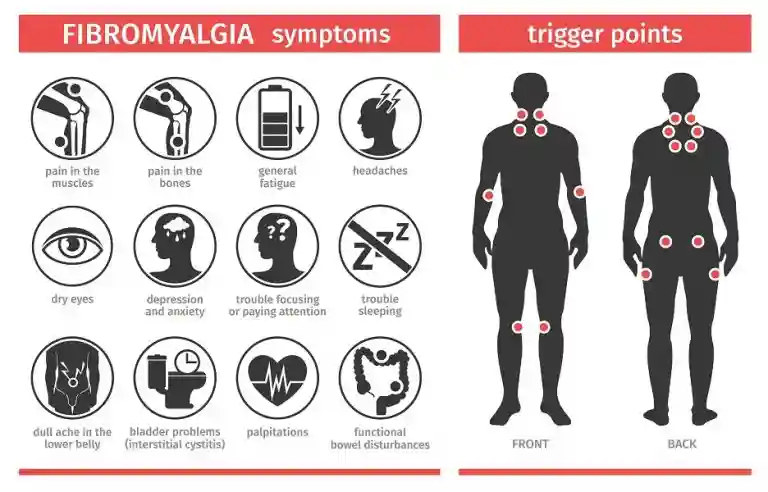
Covid-19, as we all know, shows side effects even after you’ve had the infection. It can trigger painful fibromyalgia, a rheumatic condition characterized by joint stiffness and pain, fatigue, irregular sleep patterns, and muscle aches. Read on to know more. Those who have battled Covid-19 are aware of the various complications that can arise in the post-Covid stage. From fatigue, shortness of breath, headaches, sleep troubles to low energy levels, there are so many symptoms that people have been experiencing, even after having the viral infection. But if you’re experiencing symptoms like joint pain, memory problems, severe fatigue, or sleep problems, you could be suffering from fibromyalgia. Fibromyalgia is a pain syndrome characterized by chronic pain, fatigue, and tenderness. It causes aches and pain throughout the body. In fact, fibromyalgia’s symptoms are often confused with arthritis or joint inflammation. However, unlike arthritis, it hasn’t been found to cause joint or muscle inflammation and damage. Dr. Bipin Jibhkate, a consultant of critical care medicine, and ICU director at Wockhardt Hospital, Mira Road, says fibromyalgia is a painful condition, and the pain is usually in the soft tissue, nerves, and muscles of your body. Pain is the most common symptom. What are the symptoms of fibromyalgia? Dr. Jibhkate reveals that sleep troubles, muscle, and joint pain, as well as fatigue, are the major symptoms of this condition. Apart from these, this condition is often accompanied by: What causes fibromyalgia? The exact cause of fibromyalgia is unclear; there could be different causes for different people. It has been shown to be genetic. But Dr. Jibhkate says this condition can frequently become evident if you’re dealing with: These are some risk factors that can trigger the development of fibromyalgia. How is fibromyalgia diagnosed? Dr. Jibhkate says it’s not easy to diagnose the disease because there are no specific tests. But a doctor will suspect fibromyalgia based on your symptoms. And because widespread body pain is the key feature of fibromyalgia, healthcare providers will ask you to describe your pain, so that the healthcare provider can differentiate between fibromyalgia and other diseases with similar symptoms. Is fibromyalgia a treatable disease? Although fibromyalgia can affect the quality of life, it is still treatable disease. Dr. Jibhkate says that fibromyalgia is not a life-threatening disease, but the recovery of the patient can be delayed. Therefore, the patient should not miss the treatment in the middle, or else it may worsen your symptoms. It isn’t just medicine that can treat the disease, there is also a non-drug method to treat fibromyalgia, adds the expert. Here’s how to manage fibromyalgia with lifestyle changes: According to Dr. Jibhkate, there are four major triggers or risk factors of fibromyalgia that need to be kept under control, if you want to manage the condition. These are: By keeping in mind these triggers, Dr. Jibhkate shares these tips to manage fibromyalgia: 1. Modify your diet: Avoid junk and fried foods. Instead consume high-energy foods that are low in sugar such as green vegetables, fruits, nuts, and seeds. These foods can help your energy levels stay high throughout the day. 2. Stay active: Research shows that the most effective treatment for fibromyalgia is physical exercise. Carrying out gentle aerobic exercise helps with pain and fatigue symptoms. 3. Prioritise sleep: Unrelenting pain can disrupt sleep, which can lead to increased aches and fatigue, which then creates a vicious cycle. Apart from exercise, getting enough sleep is really important, when it comes to fibromyalgia. You can meditate, in order to improve your sleep pattern. 4. Limiting alcohol: Excess alcohol and caffeine intake can disturb your sleep cycle, and sleep deprivation can lead to fatigue, which can worsen the symptoms of fibromyalgia. So, limit your alcohol intake. 5. Stress reduction: When you constantly battle pain, it can place a lot of stress on your system. Finding easy ways to relieve stress can make a huge difference to your fatigue levels. You can do activities like tai chi, meditation, morning walks, breathing exercises, and gently stretch your body to reduce stress levels. So, follow these tips and manage your fibromyalgia symptoms. Source: https://www.healthshots.com/preventive-care/self-care/how-much-should-you-exercise-after-youve-had-a-heart-attack-we-asked-a-cardiologist/
Ways on How to Cope with PTSD

Nightmares, upsetting memories, aggression, and anxiety about a trauma that you were fortunate enough to survive? While you might think of it as a sour left-over taste of the incident which might go away sometime, it may be serious enough to haunt you for years to come. In scientific terms, it is called post-traumatic stress disorder (PTSD). PTSD is a condition that can happen after people see or live through a trauma. A trauma is an intense event that involves serious injury or death or the chance of serious injury or death. “This can include medical events, such as a heart attack, surgery, or treatment in a hospital’s intensive care unit,” says Dr. Pavan Pai, Neurologist, Wockhardt Hospitals, Mira Road. Not everyone who sees or lives through trauma will get PTSD. Doctors do not know why some people get PTSD, while others don’t. “PTSD can happen at any age,” points out Pai. While it generally takes time for people to cope with PTSD, Pai lists out a few ways that can help speed up the recovery phase, if not more. 1. Mindfulness Meditation Increasingly, meditation and mindfulness-based relaxation techniques have been shown to help manage a range of disorders. A review of mindfulness-based treatments for PTSD points to a few therapies that have been found effective in reducing avoidance and self-blame in people diagnosed with the disorder. These include stress reduction, cognitive therapy, exposure therapy, meditation relaxation, and repetition of sacred words or phrases. 2. Regain Focus Through Physical Activity Many people who have been diagnosed with PTSD say that finding an enjoyable physical activity that they can perform regularly has helped them to reduce their levels of stress and cope with their symptoms. 3. Aromatherapy Another study found that orange essential oil may be effective in reducing symptoms of chronic stress and anxiety associated with PTSD. 4. Art Therapy A type of PTSD therapy that has been picking up steam over the past few years is art therapy. Led by specialists trained to work with people who have experienced traumatic situations, this type of therapy aims to help individuals externalize their emotions and learn to cope with distressing memories through art, such as painting or sculpture. This therapy helps in relaxing the mind. 5. Pets for PTSD Another approach reportedly effective in helping people to cope with the disruptive symptoms of PTSD is adopting a pet that is specially trained to recognize and prevent — or interrupt — the onset of such symptoms. A number of studies have shown that adopting a trained animal has a positive impact, at least in the short term, by helping people to manage PTSD-related depression and anxiety, as well as other symptoms such as nightmares. If you know someone who is going through PTSD, and you are wondering how you can help him/her sail through the phase, Dr. Sonal Anand, Psychiatrist, Wockhardt Hospitals, Mira Road, has a piece of advice for you. “If you know someone who is going through PTSD, helping the person get back to normal could seem like a daunting task. But with small and steady steps you can make a huge difference. First, you must become aware of the signs and symptoms of PTSD. It’s not necessary to talk it out, mostly let the person take the lead and open up gradually,” says Anand. Avoid making loud sudden noises or touching without informing as this could startle the person. Whenever the person expresses his/ her feelings, acknowledge them and let the person know you are on the same side. “It could be frustrating sometimes when the affected person seems lost or in isolation. You must remember that s/he is going through an experience that makes them hyper vigilant and suspicious. Give the person time to heal. Try to keep the daily routine structured and make sure physical fitness is looked after,” explains Anand. You could go running or join a gym or an art class together. Spending quality time matters, adds Anand. “Try to maintain a relaxing environment at home. Avoid unnecessary stress. Discuss PTSD triggers and make plans on how to deal with them and avoid reactions. Make sure you keep an eye on the mental health of the person and watch out for warning signs if you feel the person’s condition is worsening. Meeting a mental health professional must be encouraged. Make sure you emphasize compliance of medical management and therapy sessions,” advises Anand.







